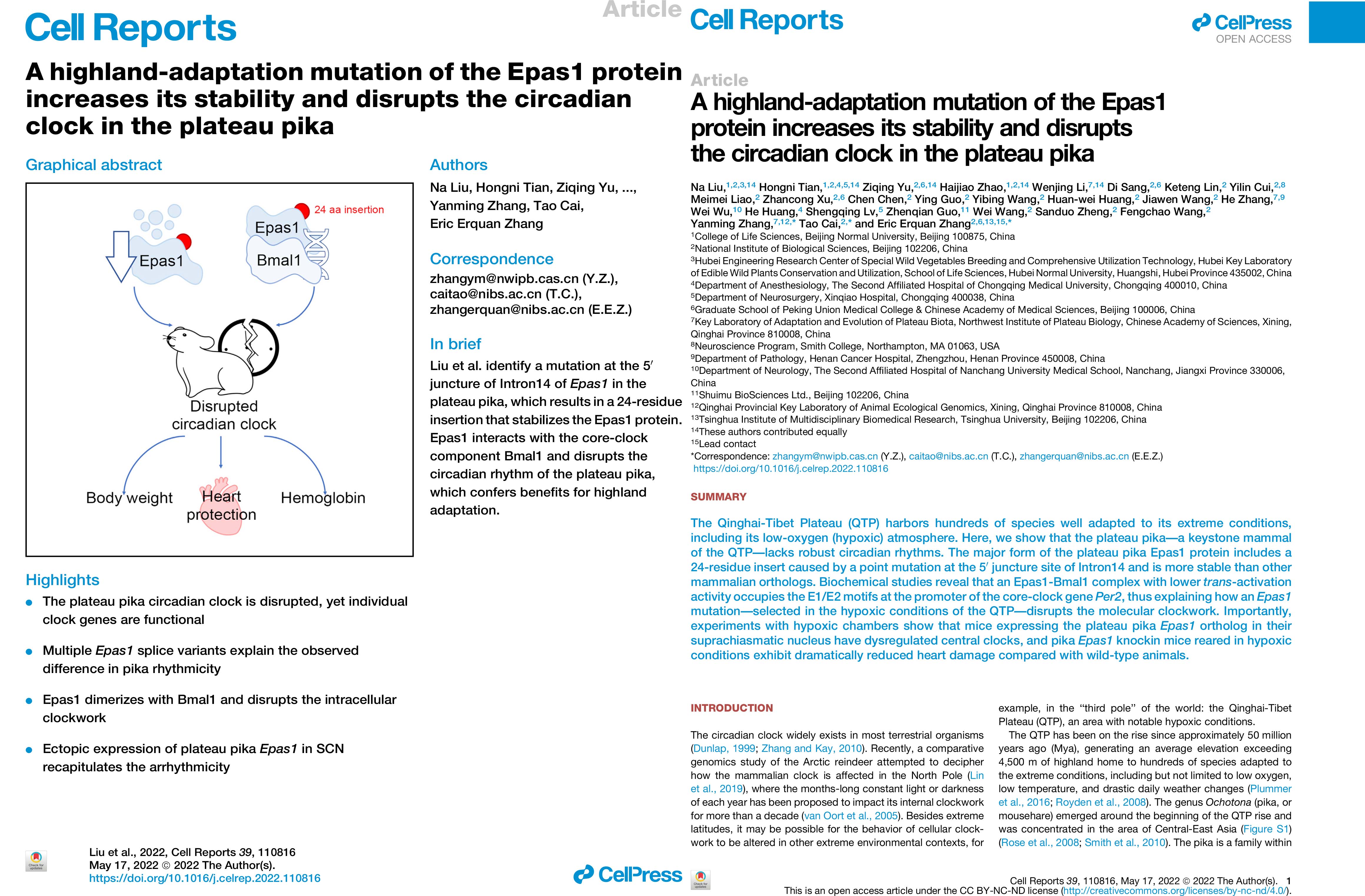A highland-adaptation mutation of the Epas1 protein increases its stability and disrupts the circadian clock in the plateau pika
Abstract:The Qinghai-Tibet Plateau (QTP) harbors hundreds of species well adapted to its extreme conditions,including its low-oxygen (hypoxic) atmosphere. Here, we show that the plateau pika—a keystone mammal of the QTP—lacks robust circadian rhythms. The major form of the plateau pika Epas1 protein includes a 24-residue insert caused by a point mutation at the 50 juncture site of Intron14 and is more stable than other mammalian orthologs. Biochemical studies reveal that an Epas1-Bmal1 complex with lower trans-activation activity occupies the E1/E2 motifs at the promoter of the core-clock gene Per2, thus explaining how an Epas1 mutation—selected in the hypoxic conditions of the QTP—disrupts the molecular clockwork. Importantly,experiments with hypoxic chambers show that mice expressing the plateau pika Epas1 ortholog in their suprachiasmatic nucleus have dysregulated central clocks, and pika Epas1 knockin mice reared in hypoxic conditions exhibit dramatically reduced heart damage compared with wild-type animals.




 青公网安备 63010402000197号
青公网安备 63010402000197号